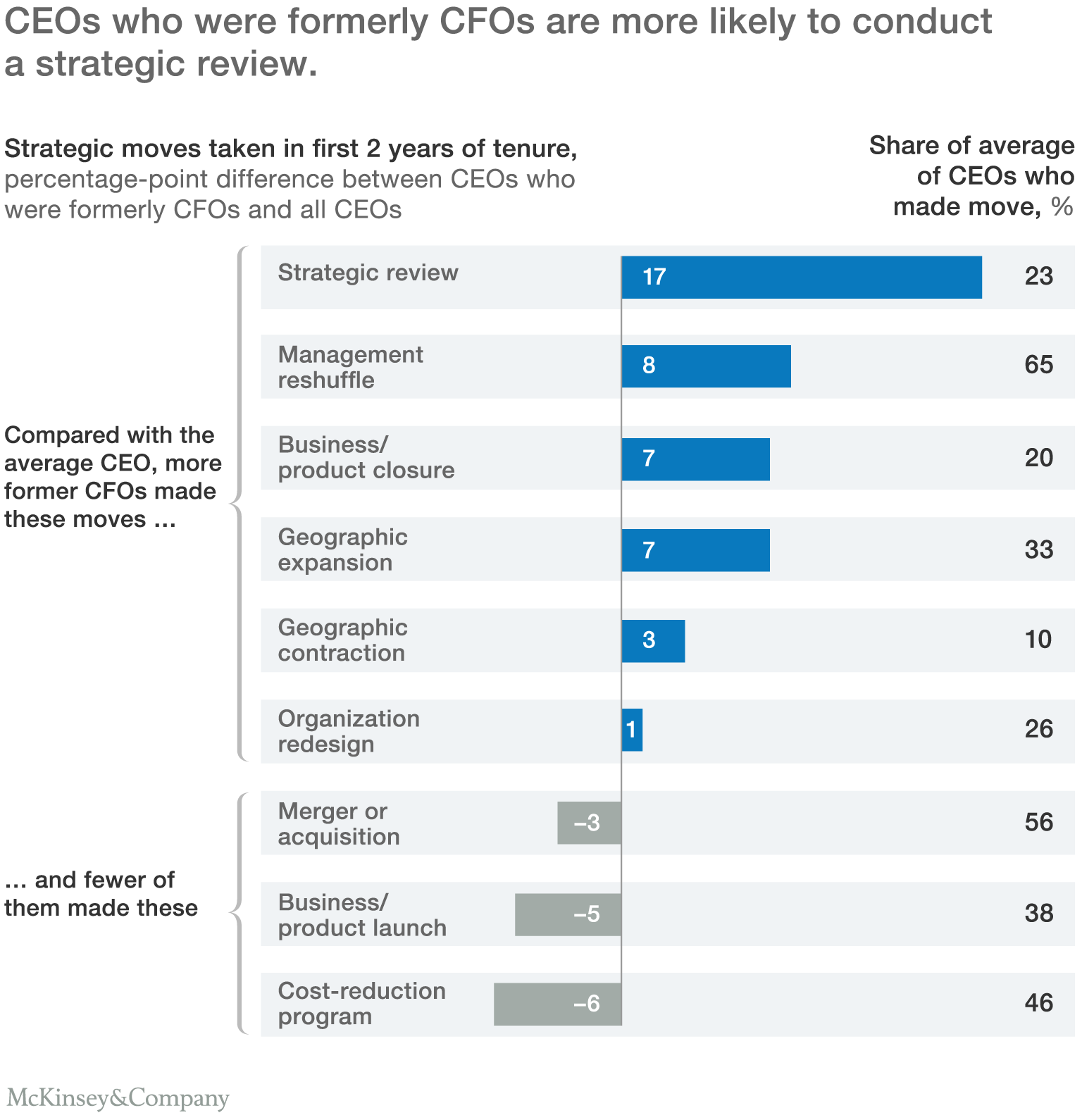We have great expertise in supporting organization in their management and transformation journey. We also offer a portfolio of innovative recruitment support services (social profiling) and some B2B/enterprise sales training as well. Our capabilities are proven by the appreciation of our customers. Let’s have a talk!
On this subject, here is an article about moving to CEO: Limited operational experience is not necessarily a barrier to the top job. Here’s what CFOs and others must do to jump to the next level.
Holding a functional leadership role isn’t the most direct route to becoming a CEO. Fewer than 15 percent of the CEOs in a data set we’ve been scrutinizing for more than a year ascended to the corner office after serving as a functional leader such as chief financial officer, chief marketing officer (CMO), chief strategy officer, chief technology officer (CTO), or general counsel. Nearly all the rest had been operators—CEOs at other companies, leaders of major operating divisions, or chief operating officers.
Regardless of the expertise they bring to bear, functional CEOs have a common set of challenges, rooted in their relative lack of operating experience. To understand both the challenge and the opportunity for functional CEOs, we scrutinized the former CFOs in our data set of 599 CEOs. CFOs represented two-thirds of the functional CEOs,1so they provided the most robust fact base for analysis. In our experience, the issues that CFOs-turned-CEOs wrestle with are emblematic of those faced by other functional executives.
Broadening the base of leadership
Lack of general management experience is a challenge for all functional executives. Many of the CFOs-turned-CEOs in a sample reviewed by our colleagues —a full three-quarters of those promoted to CEO at the FTSE 250 companies—compensated for this lack of experience by spending time outside the finance function. Sometimes nonfinancial experience comes from line roles; in other cases, CFOs burnish their skills by taking on additional functional roles in strategy or by joining the boards of other companies. Broader experiences like these appeal to boards choosing CEOs, and they can also build decision-making instincts for CFOs when they encounter issues that can’t be resolved through numbers.
More than 90 percent of the CFOs-turned-CEOs in our data set were promoted from within an organization rather than hired from outside. Deep knowledge of personalities and corporate culture can help the new CEO motivate employees as he or she articulates a vision for the company. Insider status also often necessitates a reset of relations with former peers on the management team, some of whom may also have been candidates for the CEO post. About three-quarters of the former CFOs in our research reshuffled their management teams within two years of taking office, compared with two-thirds for all new CEOs.
Building on strengths
CFOs have some natural strengths that can facilitate effective transitions into the CEO role. Former CFOs are often better at developing detailed strategies, have a deeper understanding of the drivers of business value, and can communicate that to investors. Extensive experience in budgeting and forecasting builds an appreciation of objective analysis, which CFOs typically bring to bear early in their new role. For example, former CFOs were almost twice as likely as the average CEO to conduct a strategic review in their first two years in office (exhibit).

The CFO role provides experience, and breeds skill, in allocating capital to support the organization’s strategy. This is key to outperformance, as research by our colleagues has shown. Effective resource reallocation requires CEOs and their management teams to develop a detailed view of the attractiveness of different business lines and customers. They also need to be attuned to the biases that can distort allocation decisions, combating through measures such as adopting a common set of metrics to evaluate funding opportunities or committing to annual reallocation thresholds. CFOs’ experience leading planning processes makes them especially suited to these tasks.
[to continue, click HERE]



